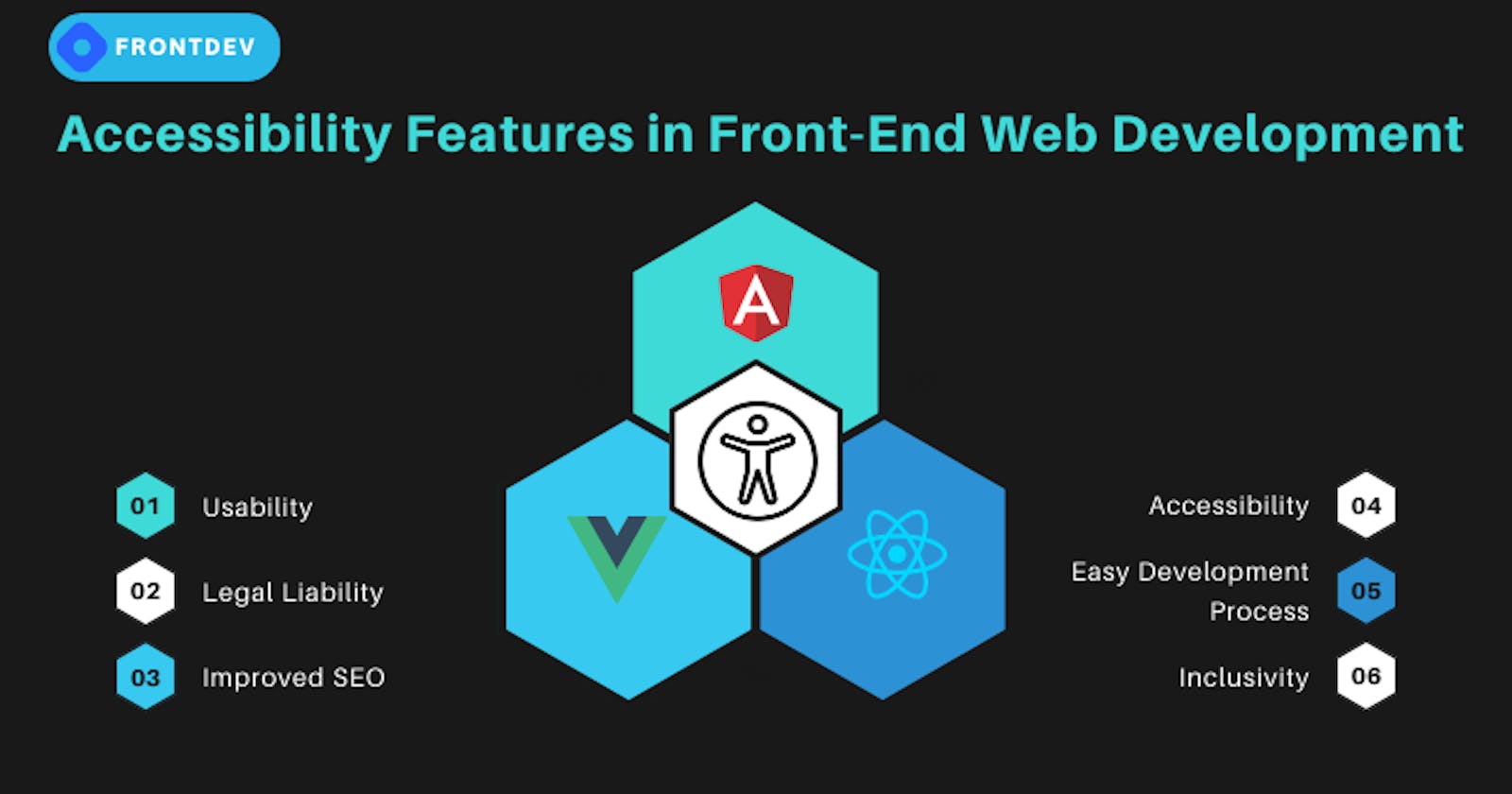A Comparison of Popular frontend Development Frameworks and their Accessibility Features
Learn why accessibility matters in front-end web development
Developing front-end applications is essential to creating a website or web application.
For this reason, it's essential to consider the accessibility features available in front-end development frameworks when choosing which one to use for your project. Accessibility ensures that websites and applications are usable by people with disabilities or impairments and helps improve usability for all users.
This article will compare three popular front-end development frameworks — Angular, React, and Vue.js — and discuss their accessibility features.
We'll also explore the benefits of incorporating accessibility into front-end applications development, such as improved user experience, increased website usability, and SEO rankings through better compliance scores, as well as potential cost savings from avoiding litigation due to a lack of accessible features.
Why is Accessibility Essential for Frontend Applications Development?
Accessibility is a major factor to consider in front-end application development. Ensuring that websites and applications are usable by people with disabilities or impairments can not only provide a better experience for users but also have a host of other benefits, including:
Increased usability: Creating front-end applications with accessibility in mind can ensure that all users, regardless of physical abilities or impairments, have an enjoyable experience interacting with your application. This increased usability can improve user satisfaction and loyalty.
Improved Accessibility: Incorporating accessibility features into front-end application development allows developers to create user interfaces accessible to all users, including those with disabilities. This helps guarantee that everyone using the app can easily navigate and understand it.
Reduced legal liability: By making front-end applications accessible, companies can protect themselves from potential legal action due to the lack of accessible features. This is especially important for companies operating in countries with laws requiring websites and apps to be accessible to all users.
Improved SEO: Making front-end applications more accessible can also help improve search engine optimization (SEO), leading to higher rankings in search engine results pages (SERPs). Google recommends creating websites and apps with accessibility in mind as part of their webmaster guidelines and considers it a signal when ranking sites on SERPs.
Streamlined development processes: Incorporating accessibility features into front-end application development streamlines the entire process by allowing developers to implement accessibility standards across different components within an application. This leads to faster development cycles which result in cost savings.
Accessibility Features in Popular Frontend Frameworks
Accessibility is an essential consideration for front-end development teams. With the right front-end framework, developers can create user interfaces accessible to all users regardless of their physical abilities.
Popular front-end frameworks such as React, Angular, and Vue provide tools and features that make it easier to build websites and applications with accessibility in mind.
React
React is a JavaScript-based open-source front-end library created by Facebook to build user interfaces with components you can reuse throughout an application. The React Accessibility API provides features such as support for ARIA (Accessible Rich Internet Applications) attributes. It allows developers to add extra information about elements on the page so screen readers can easily identify them.
Its component architecture makes it easy to implement accessibility standards across different components within the application ensuring a consistent experience for all users regardless of their physical ability or impairment.
Angular
Angular is another popular front-end framework developed by Google, which helps create single-page applications (SPAs). It includes built-in support for ARIA attributes allowing developers to add extra information about elements on the page, making them identifiable by screen readers and other assistive technologies.
Its data binding feature allows for rapid prototyping of UI components, making it easy to implement accessibility standards during front-end development.
Vue
Vue is an open-source front-end framework for building user interfaces featuring a simple syntax, two-way data binding, and virtual DOM making it easy to learn and use. It includes features such as support for WAI-ARIA attributes, allowing developers to add extra information about elements on the page so screen readers can easily understand them.
React's component architecture makes it easier to implement accessibility standards across different components in an application.
FAQs
What legal actions can arise if you do not design front-end applications with accessibility in mind?
Depending on the country, failure to provide an accessible experience could lead to fines, lawsuits, or other consequences. The World Wide Web Consortium (W3C) has developed the Web Content Accessibility Guidelines (WCAG), a set of guidelines and best practices that outline how companies should ensure their websites and apps are accessible to everyone, regardless of physical ability or impairment.
What are some standard accessibility features that front-end development frameworks offer?
Support for assistive technologies such as screen readers
Keyboard navigation support
High contrast mode
Adjustable text size and font
Support for captioning and audio description
Are there any front-end development frameworks that are strong in terms of accessibility?
Yes. Some examples include:
Bootstrap (part of the Twitter family of libraries)
While front-end frameworks may offer several accessibility features, it's still the responsibility of the developer to ensure that the applications they build with these frameworks are fully accessible.
Wrapping Up: Build with the User in Mind
Front-end development tools such as React, Angular, and Vue have built-in support features that make it easy to create applications with accessibility in mind. Incorporating these features into front-end application development can increase usability, improve accessibility, reduce legal liability, better SEO rankings, and streamline processes.
Ultimately, this will help ensure all users of your app or website have an enjoyable experience regardless of their physical abilities or impairments.

